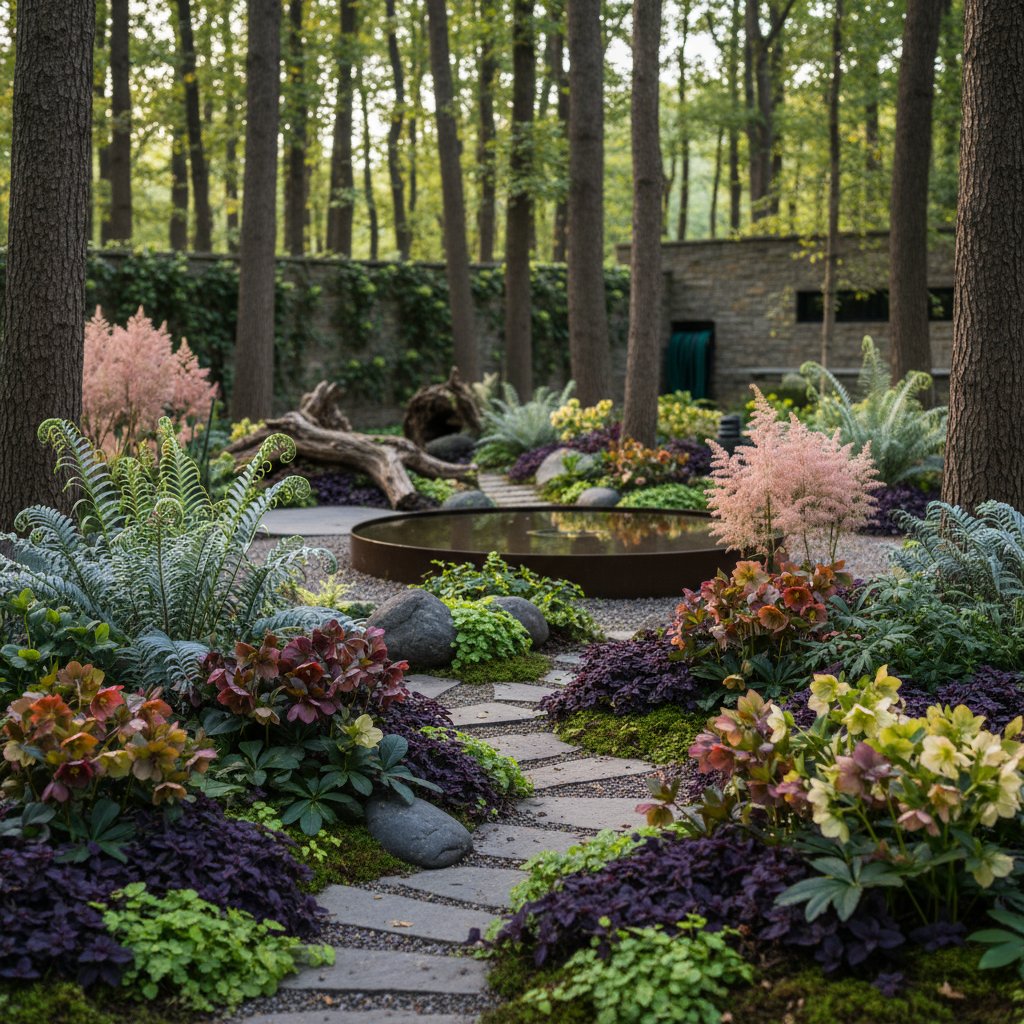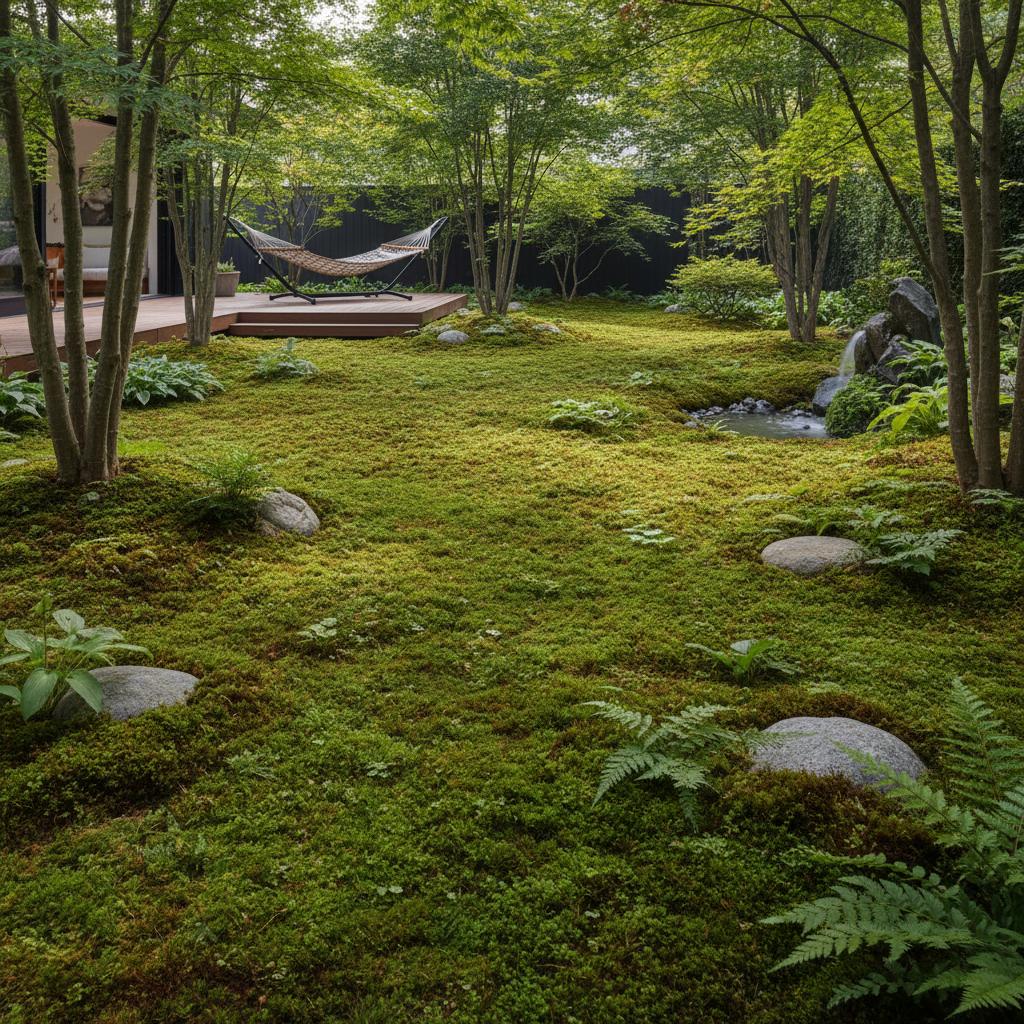The Rise of Gravel Gardens in Low-Maintenance Landscaping
Homeowners increasingly question conventional garden designs. Demanding schedules, variable climates, and escalating water expenses prompt many to adopt gravel gardens over standard lawns and planted beds. These landscapes offer versatility in aesthetics, from sleek modern interpretations to organic forms, and demand scant ongoing effort after initial setup. Individuals weary of routine mowing or desiring pristine, environmentally sound exteriors find gravel gardens a prudent and visually compelling option.
Defining a Gravel Garden
A gravel garden employs stones, rocks, and water-thrifty vegetation to form a landscape requiring limited intervention. Rather than turf or organic mulch over soil, it features a foundation of gravel. This layer inhibits weed emergence, retains soil humidity, and imparts a polished appearance. Pair it with indigenous grasses, fleshy succulents, aromatic herbs, or robust perennials adapted to arid environments.
Such gardens transcend mere rock accumulations. They represent deliberate compositions where form, hue, and contour harmonize. Gravel establishes the groundwork, with flora introducing dynamism and gentleness. Incorporate walkways, resting zones, and elements like substantial boulders or shallow water features to render the area practical and aesthetically pleasing.
Factors Driving the Popularity of Gravel Gardens
The attraction of gravel gardens proves straightforward. They demand little water, upkeep, and adapt readily to diverse settings. Examine the primary motivations behind their adoption by property owners.
-
Reduced Water Requirements
Lawns necessitate frequent irrigation, particularly in warm periods. Gravel gardens incorporate vegetation that endures on ambient precipitation post-establishment. This approach lowers utility expenses and enhances ecological viability. -
Limited Upkeep Demands
Routine tasks such as mowing, nutrient application, or border trimming become obsolete. Periodic weed removal and gentle trimming suffice in most cases. The gravel itself curbs weed proliferation, ensuring year-long ease. -
Sleek and Contemporary Aesthetic
Gravel gardens complement modern and traditional residences alike. Their unadorned contours and subdued palettes align with varied building motifs. They expand the perceived scale of compact yards, fostering openness. -
Long-Term Resilience
Unlike organic mulches that degrade, fade, or disintegrate, gravel withstands elemental shifts. It endures for decades with nominal attention. Refreshing botanical elements leaves the foundational gravel intact. -
Economical Setup Costs
Expenses vary by scale and selections, yet gravel gardens typically prove more affordable than turf installations or paved surfaces. Anticipate costs of three to eight dollars per square foot, encompassing gravel, borders, and foundational plantings. Premium aggregates or larger specimens may elevate the total.
Selecting Appropriate Gravel Types
Gravel varieties differ in form, dimension, and shade. Selection hinges on intended style and functionality.
- Pea Gravel: Compact, rounded pebbles that yield a soft walking surface. Suited for trails and lounging spots.
- Crushed Granite or Limestone: Jagged fragments that interlock for stability, ideal for vehicular access or frequented paths.
- River Rock: Substantial, smoothed boulders that introduce tactile and optical variety. Employ as highlights or encircling botanical clusters.
- Decomposed Granite: Powdery aggregate that hardens under pressure, forming durable routes or terraces.
Opt for earthy shades such as beige, slate, or ivory to evoke nature. Bolder or tinted options lend a striking, up-to-date vibe. Blending select varieties adds dimension, though excess multiplicity risks disarray.
Site Preparation Essentials
Thorough groundwork distinguishes successful gravel gardens from faltering ones. Begin by eradicating existing vegetation, turf, and refuse. Grade the terrain evenly, then lay permeable geotextile to deter subsequent weeds. Certain owners forgo this barrier to permit spontaneous seeding, contingent on preferences for a wilder aspect.
Distribute gravel to a depth of two to three inches. Opt for four inches with coarser material. Secure boundaries using metal strips, natural stone, or modular pavers to contain the aggregate. With the base secured, integrate flora and ornamental accents.
Choosing Resilient Plants for Gravel Settings
Gravel gardens need not forsake vegetation. Numerous species flourish in parched locales and integrate seamlessly amid aggregates. Prioritize those tolerant of warmth and rapid soil percolation.
Recommended selections encompass:
- Lavender: Scented, resilient bloomer excelling in desiccated earth.
- Sedum: Trailing succulents offering seasonal hues and form.
- Thyme: Creeping cover that emits fragrance underfoot.
- Echinacea: Vivid blooms drawing beneficial insects.
- Yucca: Dramatic silhouettes for architectural emphasis.
- Ornamental Grasses: Varieties like blue fescue or feather reed grass, swaying gracefully.
For planting, excavate through the gravel and underlay, incorporate organic amendments or gritty medium, and irrigate thoroughly to anchor roots.
Tailored Design Approaches for Varied Properties
Gravel gardens adapt to nearly every site configuration. Configurations align with available area and intended purposes.
- Compact City Plots: Employ subtle gravel with elevated beds for order. Integrate containerized succulents and a simple seat to craft a serene nook.
- Expansive Residential Grounds: Merge gravel with oversized rocks and local shrubs for an untamed vista. Winding trails segment vast expanses.
- Entryway Zones: Substitute sod with gravel expanses, monoliths, and bold flora for immediate impact.
- Inclined Terrains: Gravel mitigates runoff. Step-like walls or tiers facilitate tiered planting.
Incorporate illumination via energy-efficient pathway fixtures or sunlight-powered units to extend usability into evenings. Strategic boulders or avian baths serve as visual anchors.
Pitfalls to Sidestep in Gravel Garden Creation
Simplicity notwithstanding, avoidable missteps can compromise longevity.
- Overlooking Weed Barriers: Inadequate clearing invites intrusion. Initiate with pristine conditions and evaluate geotextile use.
- Inappropriate Plant Choices: Verify selections suit arid, permeable substrates.
- Inadequate Drainage Planning: Stagnant moisture harms roots. Confirm subsoil permeability prior to layering.
- Excessive Diversity: Restrain gravel hues and botanical varieties for unity.
- Omitting Containment: Borders prevent migration into adjacent surfaces.
Sustaining Your Gravel Garden
Upkeep remains straightforward yet essential. Annually rake to level irregularities. Extract emerging weeds promptly. Should gravel accumulate grime or settle, hose it clean or replenish the surface. Prune vegetation to control expansion.
In wetter climates, inspect runoff paths to safeguard structures. Realign displaced stones post-erosion. Clear leaf litter from proximate hardwoods to avert decomposition and infestations.
Steps to Establish Your Gravel Garden
Assembling a gravel garden demands no advanced expertise. Tackle it personally using standard implements, dedicated time, and forethought. Commence modestly, perhaps outlining a perimeter or access route, then scale up. Engage specialists for intricate designs or executions.
Gravel gardens enable outdoor enjoyment absent relentless labor or resource demands. They suit sunlit enclosures, gradients, and partially shaded niches with suitable flora. As elements integrate, the composition evolves into a harmonious blend of mineral, pigment, and pattern, exuding permanence.
Through meticulous groundwork and considered arrangement, your gravel garden yields sustained allure. It presents a vista enduring across seasons, repelling invasives, and conserving effort. Post-installation, relish a domain that sustains itself with grace.



